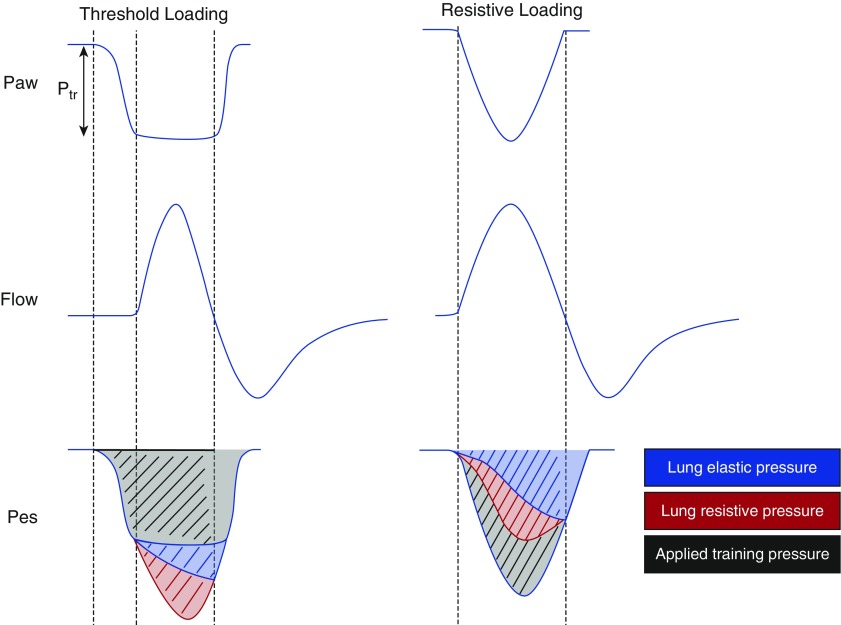Figure 1.
Inspiratory muscle training techniques. Two main types of inspiratory muscle training techniques have been applied in critically ill patients: resistive loading and threshold loading. Resistive loading involves the application of a resistor to the airway (right). The resistor increases the pressure required for the respiratory muscles to generate a given flow (the area shaded black). The required pressure is the product of resistance and flow and therefore depends on the inspiratory flow that the patient attempts to generate. Accordingly, the total training effect varies with the patient’s respiratory mechanics and respiratory drive, making it difficult to standardize. Threshold loading involves the application of a threshold valve to the airway (left). The valve is designed so that a certain level of training pressure (Ptr) must be generated by the patient’s respiratory muscles before it opens to permit inspiratory flow (analogous to the effect of intrinsic positive end-expiratory pressure). Consequently, the pressure required to maintain at least some inspiratory flow is independent of the flow and volume generated by the patient or ventilator. The total training effect (shaded in black) will therefore be independent of mechanics and respiratory drive and is easier to standardize. A threshold load may also be applied directly on the ventilator by setting a pressure trigger at a desired threshold pressure level. Threshold loading is typically performed by applying a Ptr anywhere between 20 and 50% of the patient’s maximal inspiratory pressure for a relatively brief period of time (a few repetitions or a few minutes) at regular intervals. Note: chest wall elastance and resistance are ignored on the diagram for simplicity. Paw = airway pressure; Pes = esophageal pressure.

